
54 minute read
ask the EXPERT
ask the EXPERT
about the expert
KORY JONES, MD
Dr. Jones specializes in breast surgery at USMD. A Texas native who has practiced in Arlington and Mansfield since 2007, her mission is to provide women with advanced and comprehensive breast care from diagnosis through survivorship.
about the expert
SOBIA NABEEL, MD
Dr. Nabeel specializes in medical oncology and hematology at USMD with a focus on breast cancers. She loves the opportunity to form strong, meaningful bonds with patients and families. Her goal is to deliver comprehensive, collaborative care for better clinical outcomes.
BREAST HEALTH THE BRIGHT FUTURE OF BREAST CARE
WHAT LED YOU TO SPECIALIZE IN BREAST HEALTH?
Dr. Jones: My mother was diagnosed with colon cancer when I was in medical school. After that experience, I knew I wanted to care for cancer patients. I feel strongly about being a woman’s health advocate and enjoy helping women pay attention to their breast health and get the care they need. When it comes to health, I feel women often put themselves on the back burner. When I decided to specialize in surgery, taking care of women with breast cancer and breast conditions combined my passions perfectly. I’m honored to care for women through one of the most diffi cult times of their lives - and help them come out on the other side. Dr. Nabeel: Taking care of women affected by cancer is incredibly fulfilling. The treatment of breast cancer has evolved dramatically over the last 30 years. As cancer care becomes progressively sophisticated, mortality for breast cancer declines. A main reason is widespread screening mammograms, which allow detection of cancers when they are small and contained, thus with higher cure chances. Today, women with operable stage I-III breast cancer have a high chance of cure. In many women with advanced disease, cancer can be maintained for a long time with reasonable quality of life.
HOW OFTEN SHOULD WOMEN BE SCREENED FOR BREAST CANCER?
Dr. Nabeel: Screening means looking for signs of disease before symptoms present, with a goal of fi nding cancer early when it’s more easily treated and possibly cured. Generally speaking, American Cancer Society recommends: • Women 40 to 44: Annual breast cancer screenings with mammograms if they wish.
• Women 45 to 54: Annual mammograms. • Women 55 and older: Mammograms either annually or every two years. Screening should continue as long as a woman is in good health and expected to live 10 years. I advocate starting annual mammograms sooner rather than later.
WHAT TREATMENT OPTIONS EXIST IF BREAST CANCER IS DETECTED?
Dr. Jones: Treatment depends on the kind of cancer, its size and if it has spread. The most common treatments are surgery, chemotherapy and hormonal, biological and radiation therapy. Your doctor will help you determine which is best for you.
WHAT ELSE DO YOU WANT WOMEN TO KNOW?
Dr. Jones: Early diagnosis of breast cancer is key to survival. Don’t disregard changes or concerns with your breasts. If you notice a change, even if you think it’s small, go see your doctor! You’ll never regret having it checked, but you may seriously regret ignoring it. Dr. Nabeel: A woman will probably be the fi rst to notice changes in her breasts or nipples. The fear of malignancy may lead to delay in seeking care. However, earlystage breast cancer is potentially curable so delaying care may decrease chances of cure. Don’t ignore changes in your breasts. Talk to your physician.
HOW CAN SOMEONE MAKE AN APPOINTMENT WITH YOU?
Dr. Jones: I practice at USMD Arlington South General Surgery Clinic. To make an appointment call (817) 275-3309 or visit USMD.com. Dr. Nabeel: I practice at USMD Arlington Oncology and Infusion Center. To make an appointment call (682) 274-8080.
USMD.COM // (682) 274-8080 // (817) 275-3309 << GET IN TOUCH
CARDIOTHORACIC SURGEON A PROMISING FUTURE FOR HEART PATIENTS
WHAT IS A CARDIOTHORACIC SURGEON?
A cardiothoracic surgeon is a medical doctor trained to diagnose and treat diseases of the chest, esophagus, diaphragm, heart, lungs, and trachea. A cardiothoracic surgeon completes medical school then a fi ve-year general surgery residency followed by a two to threeyear cardiothoracic surgery residency program or enter into a six-year integrated cardiothoracic surgery residency. Some choose to do additional training in a subspecialized area.
WHAT’S THE DIFFERENCE BETWEEN A CARDIOLOGIST AND A CARDIOTHORACIC SURGEON?
While they play equally important roles in the care of a patient with heart disease, in general cardiologists handle diagnosis and medical treatment or nonsurgical procedures such as balloon angioplasty, coronary stents, ablation procedures, or placement of devices such as pacemakers or defi brillators. Cardiothoracic surgeons tackle more aggressive treatment such as bypass surgery and surgical valve replacement procedures. The patient generally follows up with a cardiologist once a cardiothoracic surgeon has released them. Some newer procedures involve both cardiologists and cardiothoracic surgery such as TAVR or percutaneous valve replacement procedures.
WHAT ADVANCEMENTS HAVE YOU SEEN IN YOUR FIELD?
Over the past 30 years, I’ve been blessed to pioneer many minimally invasive thoracic surgery technique and technologies such as video and robot-assisted surgery of the chest, heart, lungs, esophagus, diaphragm, and trachea. These less-invasive procedures mean shorter recovery time, less risk of infection, negligible scarring, reduced recovery time, less blood, less pain, fewer complications, and far greater success rates. I’ve also had the privilege of pioneering a new mechanical heart valve requiring less anticoagulation. And minimally-invasive Electromagnetic Navigation Bronchoscopy (ENB) allows me access to diffi cult-to-reach areas of the lung, aiding in the diagnosis of lung disease and leading to earlier, personalized treatment, potentially saving lives.
WHAT ARE SOME OTHER PROCEDURES YOU PERFORM?
As a cardiothoracic surgeon for 30 years, I’ve performed thousands of angioplasties to restore a healthy blood fl ow to the heart, stent placement to open up narrow heart arteries, ablations to treat abnormal heart rates and rhythms, implantations of pacemakers and cardioverter defi brillators to correct abnormal heart rhythms and help hearts beat more effi ciently, open-heart surgery to treat heart blockages in the coronary arteries or correct problems or defects, coronary artery bypass grafting to bypass a coronary artery that’s narrowed or blocked, heart valve repair or replacement for damaged or diseased valves, ventricular assist devices to treat heart failure, and carotid surgery to remove plaque in a carotid artery.
WHAT ARE THE BENEFITS OF THESE PROCEDURES?
Cardiothoracic surgeries can help open coronary arteries narrowed by fatty plaque buildup, repair weakened heart muscle or defects, or correct heart rhythm problems. Because each patient is unique, each receives highly tailored treatment in collaboration with their primary care physician, cardiologist, or other healthcare providers. With new minimally invasive and robot-assisted surgeries the risk factors involved in these procedures is greatly reduced and success rates are greatly improved. We’re seeing patients return to a long, vibrant life after surgery.
GET IN TOUCH >> BRADFORDMD.COM // (817) 465-531
ask the EXPERT
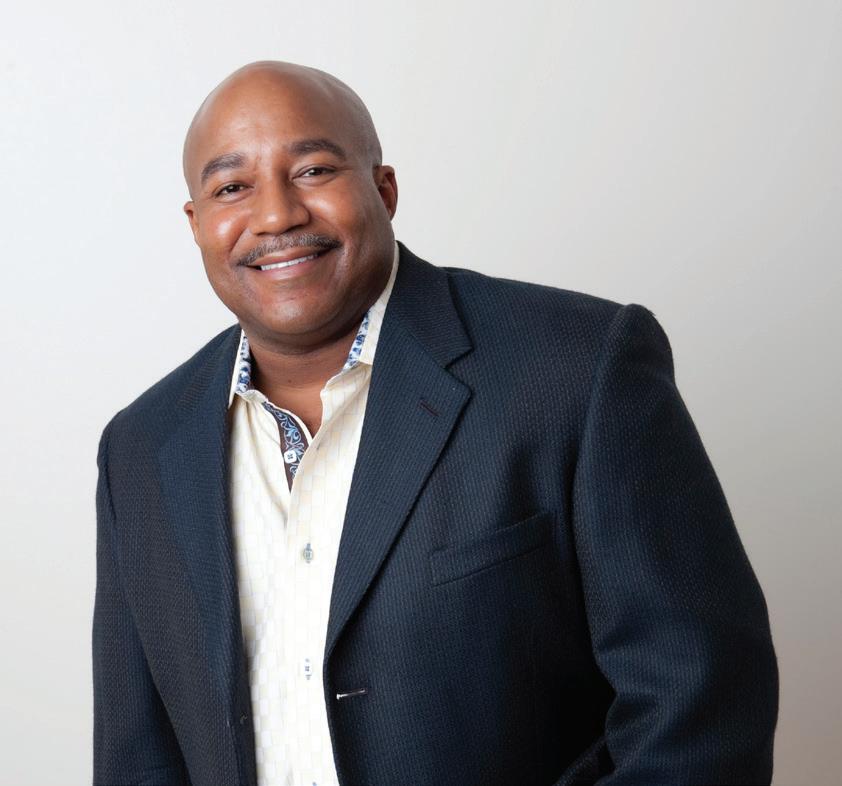
about the expert
DARIEN W. BRADFORD, M.D.
Board certified by the American Board of Surgery and the American Board of Thoracic Surgery, Dr. Darien Bradford has spent 30 years as a leader in his field, pioneering many life-saving techniques, such as minimally-invasive surgery for coronary artery disease, cancers of the lung, esophagus and chest wall, abnormalities of the great vessels and heart valves, as well as birth defects of the chest and heart.
ask the EXPERT
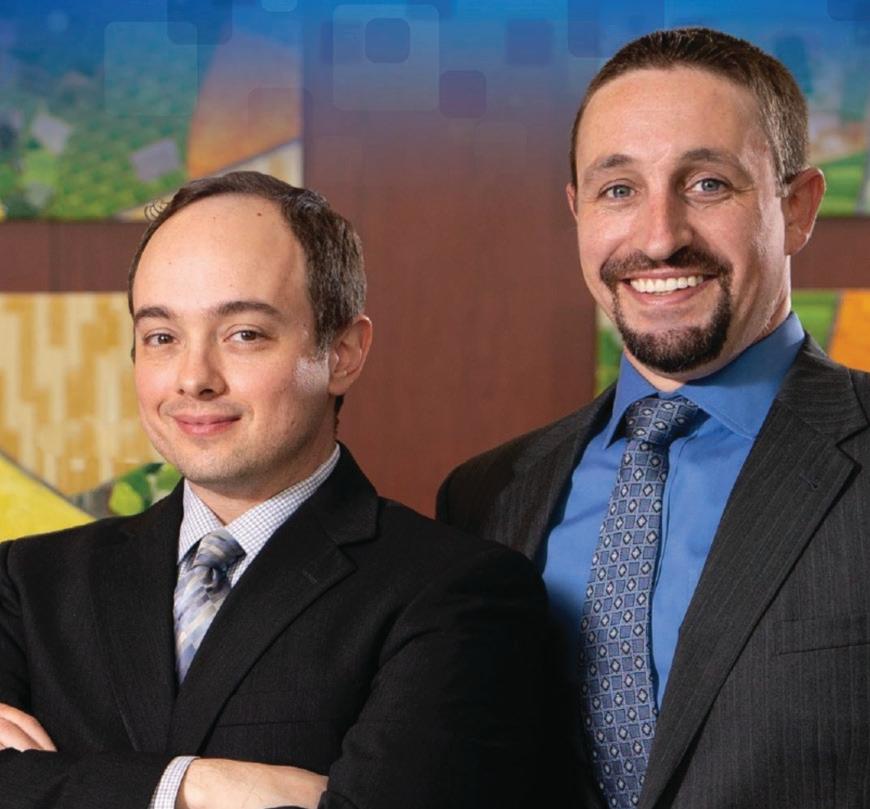
about the expert
DR. JEREMY PARCELLS
DR. ANDREW STANDERWICK
SURGICAL ASSOCIATES OF MANSFIELD
Dr. Jeremy Parcells and Dr. Andrew Standerwick are both Certified by the American Board of Surgery. They perform bariatric surgeries at Methodist Mansfield Medical Center, a recently certified MBSAQIP comprehensive center of excellence. They both specialize in weightloss surgeries including Roux-en-Y gastric bypass, gastric sleeve, and duodenal switch. In addition to bariatric surgery, they perform a wide range of procedures including hernia, gallbladder, anti-reflux, colorectal, bariatric surgery, almost all of which are done in a minimally invasive fashion using the da Vinci surgical robotic system.
AM I A CANDIDATE FOR WEIGHT LOSS SURGERY?
If you’re obese, and other treatments— including diet, exercise, and medication— haven’t worked for you, you may be a candidate for bariatric surgery. Diets, shakes, and fad diets have less than a 5% success rate compared to 70-85% with bariatric surgery. An experienced bariatric surgeon will consider your age, weight-loss goals, and any other medical problems before recommending which is the best procedure for you.
WHAT ARE THE DIFFERENT BARIATRIC PROCEDURES AVAILABLE?
Bariatric doctors are having success every day providing safe weight loss with the help of Roux-en-Y gastric bypass, gastric sleeve, and duodenal switch. At Surgical Associates of Mansfield, we’re able to perform these procedures with the help of a state-of-the-art da Vinci robotic surgical system which allows these life-saving surgeries to be performed with very small incisions, fewer wound complications, less pain, faster and easier recovery, and superior outcomes.
WHAT ARE SOME OF THE BENEFITS OF WEIGHT-LOSS SURGERY?
The ultimate goal for us is to see you live a healthier, longer, safer life. Losing excess weight through one of our cutting-edge weight-loss surgeries can also mean saying “good-bye” to obesity-related conditions such as sleep apnea, hypertension, high cholesterol, type II diabetes, depression, degenerative joint disease, and more. These are conditions which negatively affect your quality of life and often lower your life expectancy. Weight loss surgery can jumpstart your new, healthy lifestyle and improve your relationship, selfesteem, employment opportunities, and overall health and happiness.
HOW MUCH WEIGHT CAN I EXPECT TO LOSE?
A—Each patient is unique. It depends on how much weight you have to lose and how willing you are to partner with us and make the lifestyle changes necessary to lose weight safely—and keep it off. Factors like age, starting weight, and which operation you undergo can all have an impact on how much weight you lose. We’ve seen our bariatric patients lose anywhere from 40 to over 200 pounds.
CAN I STILL GET PREGNANT AFTER HAVING WEIGHT-LOSS SURGERY?
Absolutely and research suggests that weight-loss surgery before pregnancy can lower the risk to women and their babies of obesity-related problems during pregnancy, such as gestational diabetes, blood pressure disorders, newborns who are large for their gestational ages, postpartum hemorrhage, and cesarean delivery. For some women, losing weight has made it easier for them to get pregnant. It is, however, recommended that you wait at least one year, and preferably two years, after bariatric surgery to become pregnant. Your OB-GYN should perform nutritional defi ciency testing before conception to determine your individual need for supplements, as well as monthly tests during pregnancy. But many women deliver healthy babies after bariatric surgery.
ARE THERE RISKS WITH WEIGHT-LOSS SURGERY?
There are risks with any surgery. But when compared to the risks of living with obesity, the risks of bariatric surgery are minimal. The main thing to keep in mind is to have a skilled and reputable surgeon who can successfully address any risks that arise in a healthy and safe way. Very rarely do complications arise.
AUDIOLOGIST HEARING HEALTH CARE MATTERS!
WHEN AND WHY SHOULD I GET MY EARS & HEARING CHECKED?
Hearing loss occurs gradually over time. It is estimated that by the time most people make the decision to get their ears and hearing checked, they have not been hearing well or understanding clearly for seven years, or longer. Dr. Melissa Danchak, owner/audiologist at Kos/Danchak Audiology & Hearing Aids, encourages everyone over the age of 50 to have a baseline hearing evaluation, especially if it has been more than 2 years since your last hearing test. Depending on the results of the evaluation, a regularly scheduled test annually or every two years is recommended. Regardless of age however, if you are difficulty hearing and understanding when background noise is present, or if you have ringing in your ears (called Tinnitus), the best fi rst step you can take is to get your ears and hearing checked!
ARE HEARING LOSS AND DEMENTIA REALLY LINKED?
Over the last 10-15 years, the role of cognition in a patient’s overall hearing and communication performance has captured the interest of clinical and research audiologists seeking to maximize hearing and quality-of-life outcomes. The brain will compensate to overcome challenges brought on by hearing impairment. “In other words, the increased cognitive load can lead to cognitive defi cits. Hearing loss is not normal, and neither is the extra workload that it puts on the brain. The brain is constantly working overtime trying to fi ll in the blanks.”
WHERE SHOULD I GO FOR A HEARING EVALUATION?
Just like each ear is different, each audiology practice is also different. “We are very humbled by the online reviews and recommendations our patients are posting publicly on Google, Facebook, and healthyhearing.com. Having patients share their experiences helps those beginning their search for hearing healthcare understand that Kos/Danchak Audiology is the right choice,” says Dr. Danchak. “We encourage those searching for hearing healthcare to visit our website. We have a lot of valuable information and engaging videos to learn from.”
WHAT HEARING AIDS ARE BEST FOR ME?
Understanding the different types of hearing aids does not have to be overwhelming. “The first thing to understand is that there are levels of hearing aid technology available.” Dr. Danchak says, “at Kos/Danchak Audiology, we use the results of your hearing test to demonstrate the best fi t for your unique lifestyle. Hearing aid technology has the ability to enhance the clarity of speech – which is what most people need and want. They want to be able to understand speech better - they don’t want every sound to be louder. They want to clearly understand what is being said, especially when there is background noise present.”
ask the EXPERT
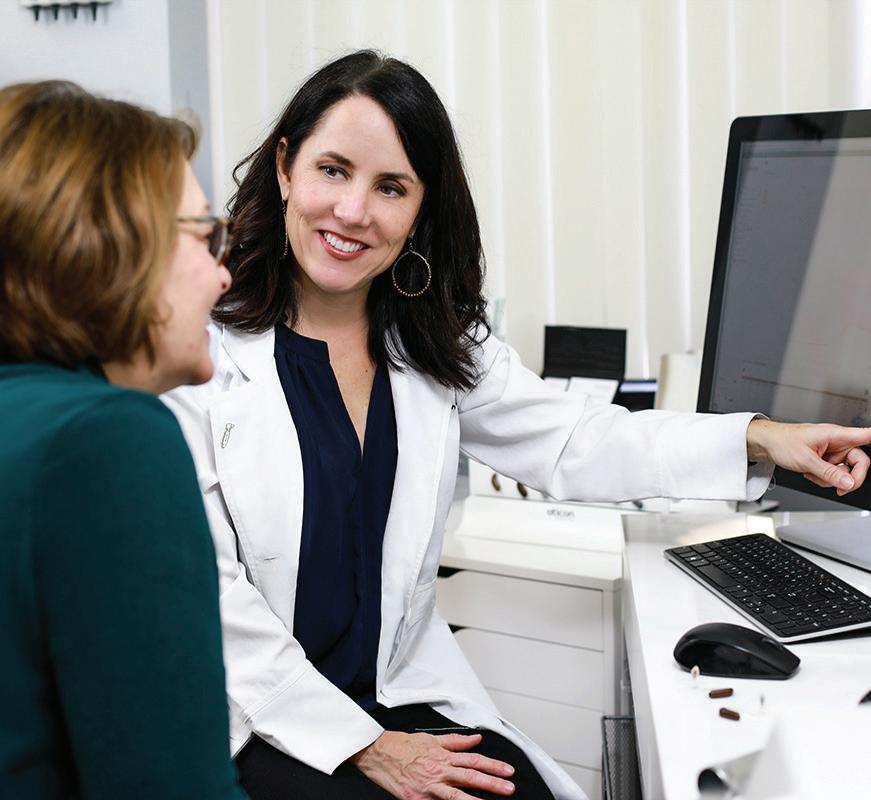
about the expert
DR. MELISSA DANCHAK, AUD, CCC-A
KOS/DANCHAK AUDIOLOGY & HEARING AIDS
Melissa Danchak is a Doctor of Audiology and owner of Kos/ Danchak Audiology & Hearing Aids in Arlington, Texas. KDA has been “helping North Texans hear better for over 35 years.” Dr. Danchak has been the owner of KDA for more than 20 years.
ask the EXPERT
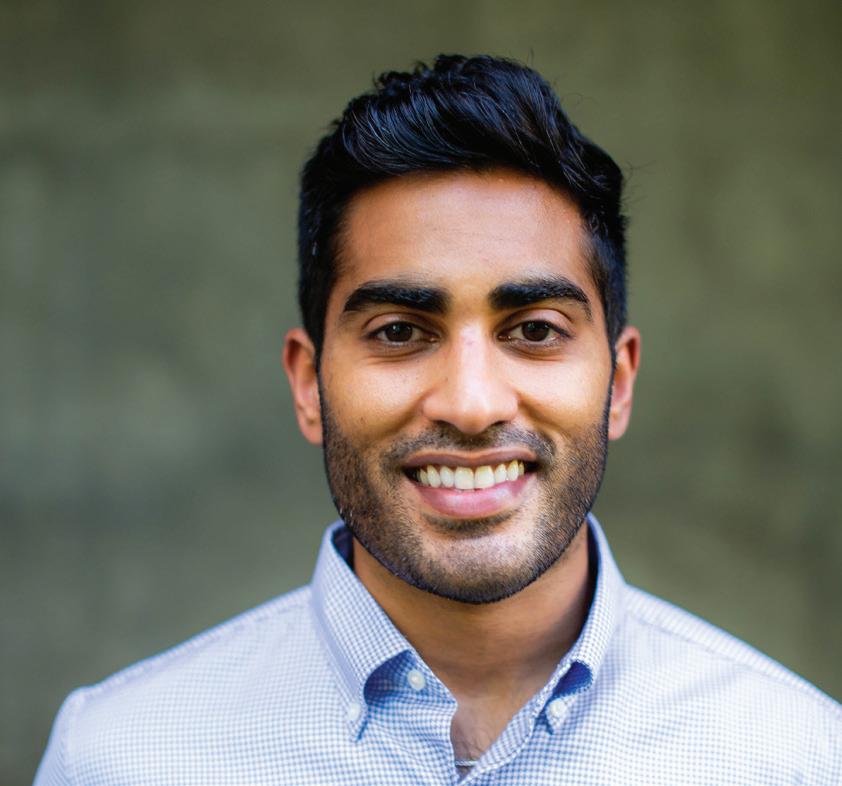
about the expert
DR. ASHISH ARSHANAPALLI
UNITED DERMATOLOGY ASSOCIATES
While his primary focus is skin cancer surgery and reconstruction, Ashish also enjoys general dermatology and cosmetics. He has been published in multiple medical journals involving laser therapies for scar reduction. Dr. Arshanapalli graduated at the top of his class at the Indiana University School of Medicine, then conducted his residency in Dermatology at Loyola University Medical Center in Chicago. He completed a Mohs micrographic surgery fellowship at the University of Wisconsin, the birthplace of Mohs surgery.
DERMATOLOGIST MOVING ON FROM SKIN CANCER – MOHS SURGERY MAKES IT HAPPEN
WHAT IS “MOHS” SURGERY?
Mohs is a technique developed by Dr. Frederic E. Mohs, in which your dermatologic surgeon will remove a skin cancer, layer by layer, and microscopically examine each section. This enables total removal of the cancer while sparing your healthy skin, reducing scarring and speeding your recovery. Mohs Surgery provides the highest cure rate for removal of skin cancer – up to 99 percent for a skin cancer that has not been treated before, and up to 94 percent for a skin cancer that has recurred after previous treatments.
WHEN IS MOHS THE RIGHT TREATMENT?
Mohs is the gold standard of treatment for many basal cell carcinomas (BCC) and squamous cell carcinomas (SCC), including sensitive and critical areas around the eyes, nose, lips, ears, scalp, fi ngers, toes, or genitals. In these cases, removing the least tissue necessary is essential to minimize scars or limited function. We also recommend Mohs for recurring cases, or aggressive cases where BCC or SCC are large, growing rapidly, have indistinct edges. Mohs has also been successful in treating certain cases of melanoma.
WHAT HAPPENS DURING MOHS SURGERY?
The surgery happens in three primary steps, all in one visit. First, the skin around the cancer will be anesthetized (numbed), and the visible skin cancer will be removed. Second, a thin layer just beyond the visible cancer will be surgically removed, processed, stained, and examined microscopically. You will have a short wait while the tissue is analyzed to confi rm we have removed all the cancer. If any cancer cells do still remain, steps one and two will be repeated. In the third step, once the skin cancer is fully removed, your surgeon will recommend the best way to treat and close the wound to minimize scarring, promote healing, and speed your recovery.
WILL I NEED A SKIN GRAFT?
How your wound is closed will depend on the size and location of the cancerous cells. In most instances, we can repair the wound immediately after confi rming the cancer is fully removed. It may be best to leave the wound open to heal, or to close it with a few stitches. Some cases may require a reconstructive skin fl ap, where neighboring tissue is moved into the wound, or by a skin graft. Your Mohs surgeon may coordinate the repair with another specialist such as a plastic surgeon.
WHAT CAN I EXPECT AFTER MOHS SURGERY?
There is usually minimal pain for a few days after surgery, and you should limit exercise and vigorous physical activity the fi rst couple of weeks. You can expect some swelling and bruising, and even numbness around the site for up to a year. While scarring cannot be prevented, we make it a priority to minimize it. This is a defi nite benefi t of Mohs Surgery.
WILL I HAVE TO RETURN FOR FOLLOW UPS?
Once you have had a skin cancer, you are at a higher risk for more. So, take care of yourself by following up with your general dermatologist on a regular basis. You are worth the extra care – we want to see you healthy!
UNITEDDERM.COM // (817) 539-0959 << GET IN TOUCH
WHAT IS A MOMMY MAKEOVER?
“Mommy Makeover” is term used to describe a comprehensive cosmetic surgical procedure that targets common areas of concerns following pregnancy and breastfeeding. Typically, a mommy makeover involves cosmetic surgery performed on both the abdomen and breasts during a simultaneous operation.
WHAT SURGICAL PROCEDURES ARE PERFORMED DURING A MOMMY MAKEOVER?
Cosmetic surgery procedures commonly performed during a mommy makeover include liposuction, abdominoplasty (tummy tuck), breast augmentation with or without a mastopexy (breast lift), and / or buttock fat grafting (Brazilian Butt Lift).
AFTER PREGNANCY HOW DOES A MOMMY MAKEOVER IMPROVE THE APPEARANCE OF MY TUMMY?
By surgically repairing the separation of the abdominal muscles and removing skin excess, a mommy makeover tummy tuck can surgically sculpt a smaller midsection and can near-approximate the appearance of your tummy to the way it used to look before pregnancy, including completely removing most of your stretch marks or c-section scars. In addition, pregnancy may also lead to stubborn pockets of fat that resist weight loss and exercise. Liposuction or the surgical removal of excess fat will reduce stubborn fat pockets around your back, fl anks, and abdomen. Consequently, if you have both loose skin and resistant fat, you may be considered a candidate for lipo-abdominoplasty, a comprehensive treatment that combines liposuction and tummy tuck at the same time.
WHAT BREAST ENHANCEMENT CAN I ACHIEVE WITH A MOMMY MAKEOVER?
The look and feel of your breasts are often one of the main focuses of a mommy makeover. Pregnancy and lactation cause your breasts to increase size and may leave some mothers with the appearance of saggy and droopy breasts following breast feeding. Therefore, a breast lift or mastopexy is a cosmetic surgical procedure commonly performed during a mommy makeover that lifts saggy breast tissue and removes skin excess to create breasts that are more youthful and balanced. In addition, a breast lift can be combined with simultaneous breast augmentation to restore lost volume. During breast augmentation, saline or silicone breast implants are inserted to increase size and build the ideal shape based upon your preference.
IS A MOMMY MAKEOVER RIGHT FOR ME?
If you are contemplating a mommy makeover, there are several important considerations. For starters, while the results of your mommy makeover are considered long-term, additional pregnancies may adversely affect all the wonderful surgical work that was performed. Therefore, it is ideal to complete your family planning prior to considering a mommy makeover. In addition, it is equally important to reach your ideal weight loss goals before cosmetic surgery, as liposuction and tummy tucks are not meant to be used in lieu of natural postpartum weight loss. Finally, if you are interested having breast cosmetic surgery following pregnancy, you will need to discontinue breastfeeding approximately 4 to 6 months before undergoing mommy makeover breast enhancement surgery to ensure that your breasts have settled into their natural volume.
ask the EXPERT
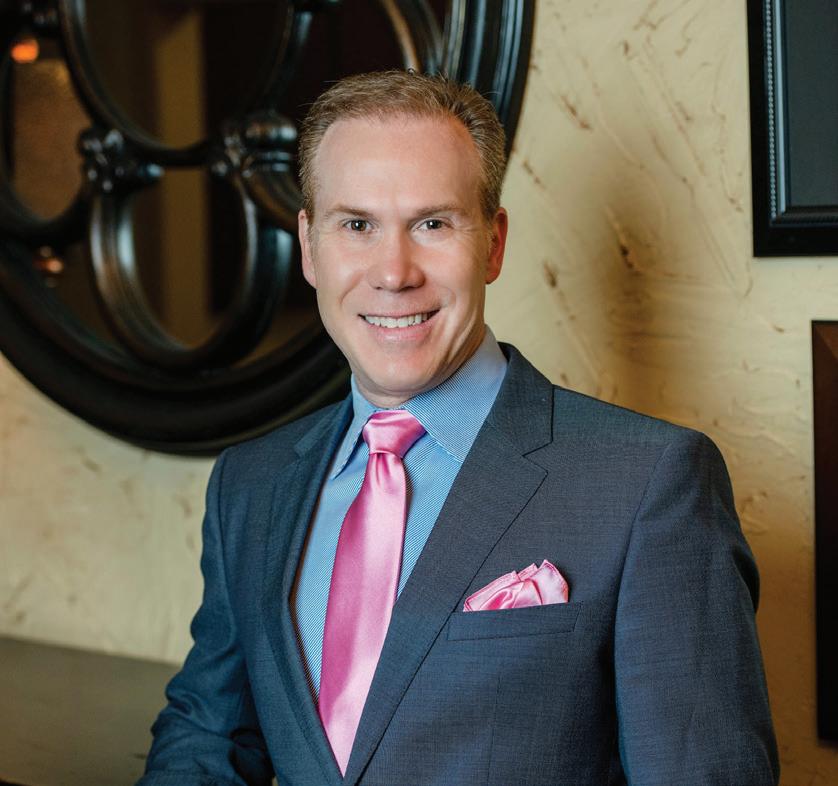
about the expert
MICHAEL L. THORNTON, DO, FACOS
MANSFIELD COSMETIC SURGERY CENTER
Dr. Thornton is a fellowshiptrained, double-board-certified cosmetic surgeon and a diplomate of the American Board of Cosmetic Surgery. Additionally, he completed a dedicated 12-month fellowship in cosmetic surgery accredited by the American Academy of Cosmetic Surgery focusing on all aspects of cosmetic surgery, including facial plastic surgery, cosmetic breast surgery, liposuction, body contouring surgery, nonsurgical aesthetics, skin care rejuvenation, and cosmetic laser surgery.
ask the EXPERT
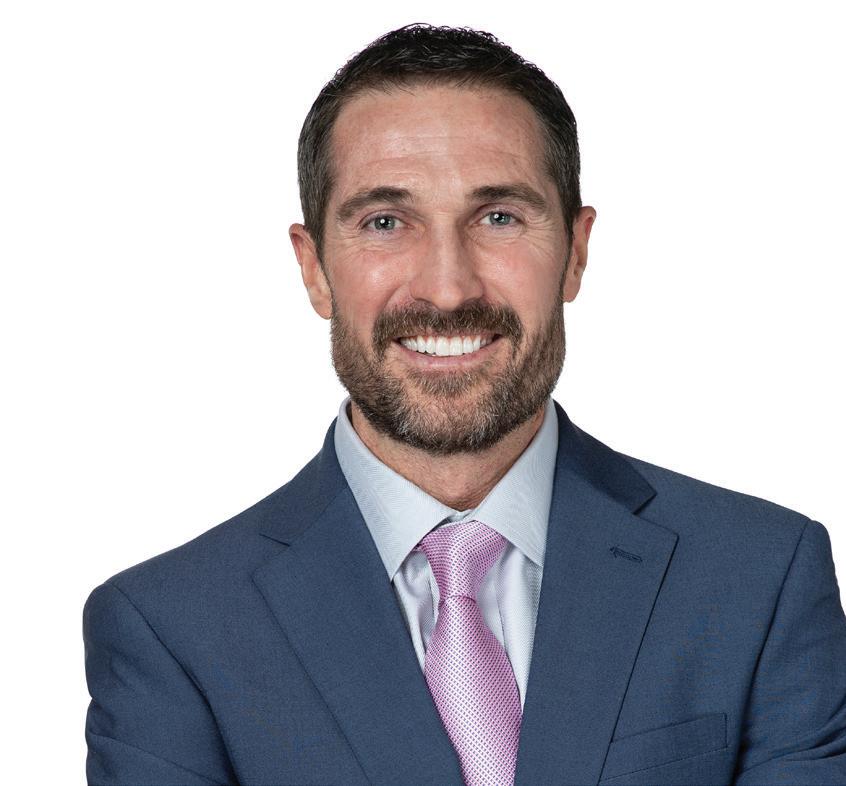
about the expert
KELLY FRASIER, MD
KLEIMAN EVANGELISTA EYE CENTERS OF TEXAS
When Dr. Frasier had lasercorrective surgery in college, it sparked his interest in ophthalmology. He operated a private ophthalmology practice in Lubbock for eight years prior to joining the Kleiman Evangelista team. The best part of the job for him is getting to know his patients and their families, taking time to answer all their questions and address all their concerns.
OPHTHALMOLOGY LOOKING TOWARD A BRIGHTER FUTURE WITH LASIK
WHAT EXACTLY IS LASIK?
LASIK is an acronym for “laser-assisted in situ keratomileusis”. It’s an innovative surgery that reshapes your cornea through the use of lasers. It’s a quick and precise and can correct myopia (nearsightedness), hyperopia (farsightedness), and astigmatism, enabling you to see clearly without glasses or contact lenses.
HOW LONG DOES THE PROCEDURE TAKE?
In many cases, the surgery can be performed on both eyes in under 15 minutes, and since it’s an outpatient procedure, you’ll be able to relax in the comfort of your own home as your eyes heal. LASIK is typically painless, its results are immediate, and its recovery period is short.
ARE THERE POTENTIAL RISKS OF LASIK SURGERY?
As with any surgery, there is always a risk for infection, scarring, or haze from the procedure. Also, until the fl ap has healed, there’s risk for fl ap dislocation if anything were to come in contact with the eye itself. Dry eye may be a factor for some in the initial post-operative period as well.
WILL MY AGE BE A FACTOR IN THE SUCCESS OF THE SURGERY?
Age is not as strong of a predictor of success as much as selecting those who are great candidates for the procedure. Certainly, no one under the age of l8 is recommended to have LASIK treatment due to continued growth and potential for change with adolescents.
WHAT RESULTS CAN I EXPECT?
With LASIK, the main goal is to improve the refractive state of the individual to make them less dependent on glasses and contacts. There’s no guarantee the procedure will result in 20/20 vision though. The most common reason for treatment is for better uncorrected vision at a distance. Over the age of 40, the need for reading glasses will become necessary for many. However, this is due to the aging of the lens inside the eye and not to any “complication” from the LASlK procedure.
HOW LONG WILL IT TAKE FOR ME TO RECOVER FROM THE SURGERY?
Most individuals will see improved vision within the same day of treatment. Depending on the type and amount of treatment, the quality of the vision can continue to improve for weeks to months after the procedure. Medicated drops will be needed for the fi rst week for improved healing and decreased risk of infection. Artifi cial tears are recommended for the initial healing period as well.
ARE THERE HEALTH CONDITIONS THAT MIGHT RULE OUT THIS OPTION FOR ME?
In general, a complete eye exam is always necessary to ensure ocular health prior to any procedure. There are some autoimmune conditions that could lead to poor wound healing. Women who are pregnant or breastfeeding may experience change in their vision during this time. For that reason, it’s recommended you wait a few weeks after delivery or cessation of breastfeeding to allow the vision to stabilize. Any other systemic treatment that could interfere with wound healing is not recommended for LASIK, such as chemotherapy.
FINANCIAL ADVISOR IT’S NEVER TOO EARLY TO SET OUT ON THE ROAD TO FINANCIAL SECURITY
WHAT’S A GOOD AGE TO START
RETIREMENT PLANNING ? Start with your very fi rst job. Set aside 10% of every paycheck for saving and investing. If there are two wage earners in the household, increase the savings percentage. Almost every financial planning course, fi nancial planning book, and even the Bible says to save at least 10% for the future. As a teenager, I learned the rule of 72. An investment that returns an average of 12% will double every six years. 6 X 12 = 72. A 6% return will double every 12 years. If you have a 401K at work and they match your money, maximize that match. 100% return! Never remove your retirement money to purchase something. Keep your retirement money protected. Build the nest egg and leverage your money by having a good fi nancial statement.
HOW DO I PICK THE RIGHT RETIREMENT PLAN FOR ME AND MY FAMILY?
It depends on the opportunities available in your life. Mutual funds are a great way to save and invest. It’s important to take advantage of 401K, Roth IRA, traditional IRAs, and cash-value life insurance in combination with other investment opportunities. Pick the type of investment that fi ts your risk tolerance. If you have the talent and time, you can buy investment properties like rental homes and/or buildings that create income. Be sure to have six months to a year of liquid reserves to support your family. Avoid all get-rich schemes! Instead, associate with people leading successful fi nancial lives. You need a plan and the discipline of saving and investing.
DO YOU OFFER A WAY TO HELP ME SAVE FOR MY CHILDREN’S COLLEGE EDUCATION?
Yes, the IRS-qualifi ed 529 plan is a good way to provide money for education. I’ve set up plans for my four grandchildren by gifting money into a mutual fund 529 plan designed to fi t the needs and risk of each child. Although this plan can be used for elementary or secondary education, it works the best for college because the money has time to grow and compound. Start the plan the month the child is born—or earlier. You can gift as much as $15,000 per year per child or $75,000 as an advanced fi ve-year gift, getting full advantage of time and money.
DOES MY CREDIT RATING AFFECT MY INSURANCE COST?
A bad credit rating can negatively affect the cost of your insurance and the cost of any loans, including home, auto, and other loans. It’s free to keep track of your credit rating and keeping a high-quality credit rating is essential to your fi nancial success. An experienced fi nancial advisor can talk to you about this as well as things like combining home and auto insurance for substantial savings and saving up to 45% on car insurance by applying Drive Safe & Save on your vehicle just for being a better than average driver. It’s important to have an experienced fi nancial advisor on your team to help you make these and other savvy fi nancial decisions.
ask the EXPERT
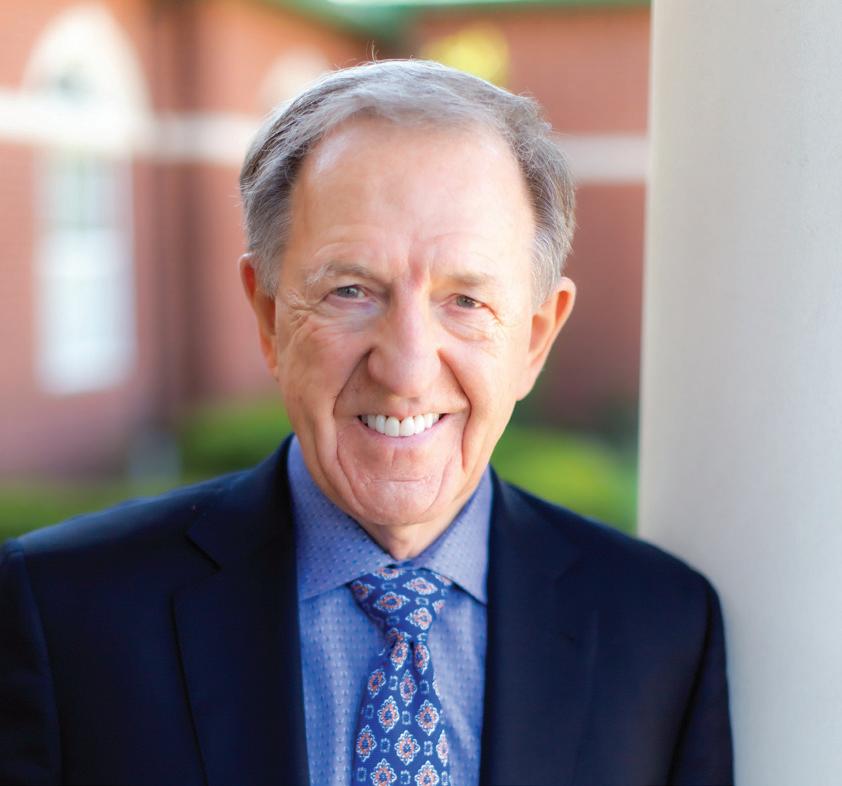
about the expert
AL CLARK
STATE FARM INSURANCE
Over his 41 years as a top agent for State Farm, Al has made his mark in the company, in the lives of his clients, and in our community. Rookie of the Year his very first year, he’s placed number one out of 19,000 agents companywide and has been one of only three people who have earned Chairman’s Circle every Year including his wife Shalyn.
GET IN TOUCH >> ALCLARK.NET // (817) 468-3033
ask the EXPERT
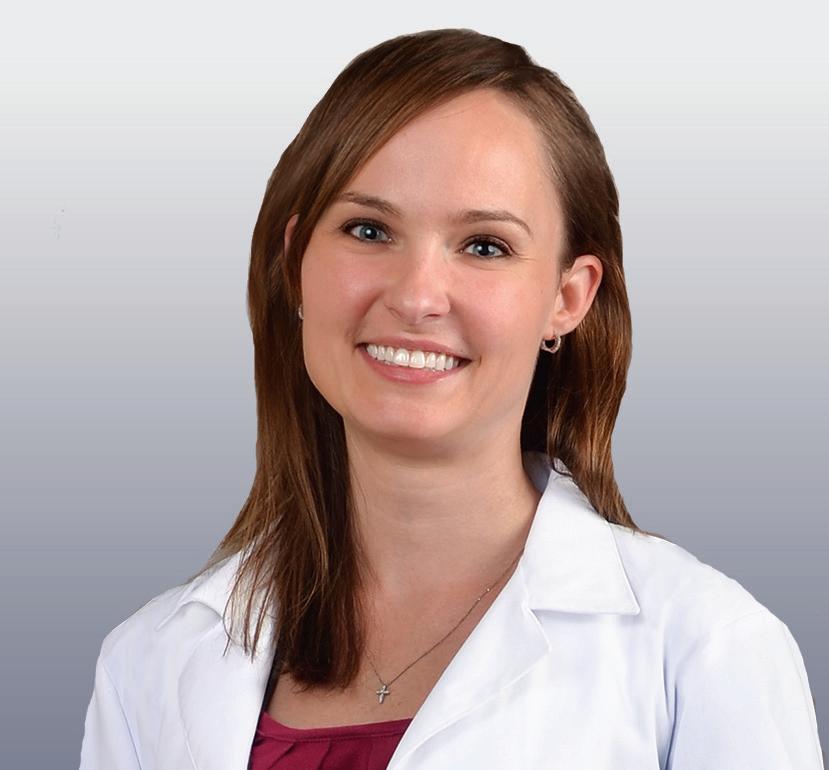
about the expert
ERIN WALLACE, MD
USMD MANSFIELD PEDIATRIC CLINIC
Dr. Wallace considers it a privilege to help children grow and develop from birth through young adulthood. A graduate of University of Cincinnati College of Medicine, she completed her residency at Cincinnati Children’s Hospital Medical Center and now practices at USMD. She’s board certified by American Board of Pediatrics and particularly enjoys helping families learn about their child’s character and development.
PEDIATRICS PARTNERING WITH YOU IN THE GREATEST JOURNEY OF YOUR LIFE
WHAT’S THE BEST WAY TO CHOOSE A PEDIATRICIAN? SHOULD I SELECT ONE BEFORE MY BABY IS BORN?
It’s a great idea to select a pediatrician before your child is born. Having a baby changes so much and having this important decision made ahead of time is one less detail to worry about. The great news is many pediatricians provide free prenatal visits. This allow you to sit down and talk with potential doctors. If you don’t have this opportunity or you’re looking for a new pediatrician, I always suggest taking with your OB/GYN or your friends. They can often provide great recommendations. It’s also important to check with your insurance and determine if the pediatrician you selected is on your insurance plan. Not doing this ahead of time can cause stress down the road.
HOW OFTEN SHOULD MY CHILD SEE A PEDIATRICIAN AND WHAT CAN I EXPECT AT THESE APPOINTMENTS?
Your child will see a pediatrician from birth through adolescence, with frequent wellchild visits happening every few months throughout their fi rst few years of life. These well-child visits will become annual visits once your child is older, generally around the age of three. Each well-child visit is a bit different depending on your child’s age. Generally, however, they include weight and height measurements, developmental screenings, blood pressure, vision and hearing checks, and vaccines— and blood work as needed. These visits are also opportunities to talk with your pediatrician about any developmental concerns you may have. This includes things like school readiness or behavior and physical concerns. Pediatricians will also see children as needed for sick visits, injuries, chronic conditions, and follow-up exams as they grow.
WHAT’S CONSIDERED NORMAL? ARE THERE CERTAIN THINGS OR WARNING SIGNS I SHOULD LOOK FOR AS MY CHILD GROWS?
This depends on your child’s age. Your pediatrician will give you information on what to expect when it comes to your child’s development and behavior. If you feel your child isn’t developing at a normal rate, not achieving developmental milestones appropriately, or if family members, teachers, or daycare providers expresses concern about your child’s development or behaviors, ask your pediatrician. That’s why we’re here. You’ll never regret asking questions.
WHY DID YOU DECIDE TO BECOME A PEDIATRICIAN?
I love getting to know children and families. Babies grow up overnight it seems—from needing everything as a newborn to a two-year old who often tells parents and siblings what to do. For me, it’s a privilege to be an extension of your family and to educate you on your child’s growth, development, and milestones. My goal is to partner with you to help your child be as healthy as possible as they transition from newborn to adolescent.
HOW CAN SOMEONE MAKE AN APPOINTMENT WITH YOU?
I care for children at the USMD Mansfi eld Pediatric Clinic located at 252 Matlock Road, Suite 330, Mansfi eld, Texas 76063. To make an appointment with me or one of my partners call (817) 557-5437 or visit USMD.com.
USMD.COM // (817) 557-5437 << GET IN TOUCH
ORTHODONTIST GET READY FOR YOUR NEW SMILE
WHAT IS THE IDEAL AGE FOR BRACES?
Age seven—An orthodontic check-up should be done on all children at age seven. Braces usually go on at age 12, once all the permanent teeth are in. But most kids will benefi t from an expander made with the new digital scanner to develop space for the permanent teeth. You can schedule a free exam with Dr. Hildebrand by calling (817)468-4141.
HOW MANY MONTHS IS A NORMAL BRACES TREATMENT?
18 months—Most cases with Dr. Hildebrand take up to 18 months to get the teeth aligned and a great smile and bite. By starting early and utilizing the newest small brackets, with fl exible wires and no dreaded “tightening” appointments, Dr. H can give patients beautiful smiles in just 18 months. If your orthodontist is still using bands around teeth in the back, get a second opinion with someone that uses mini brackets on the outside of the teeth. The best two treatment options today are mini braces and Invisalign clear aligners. With them we can monitor your teeth movements and give you the perfect smile
HOW WILL MY LIFE CHANGE WHILE IN TREATMENT?
Straightening your teeth with Invisalign and braces is simple and shouldn’t require too much alternation to your lifestyle, except some dietary restrictions, to keep brackets glued on your teeth. Some soreness is inevitable. Keeping up with brushing and fl ossing should allow straightening with little disruption to your daily routine.
DO BRACES HURT?
No, the new, mini braces lightly move the teeth into a straighter position which limits the soreness and some patients say they don’t feel a thing. The new fl exible wires used by Dr. Hildebrand were designed by NASA to slowly align your teeth into a perfect smile.
WILL BRACES INTERFERE WITH SCHOOL ACTIVITIES LIKE SPORTS, PLAYING AN INSTRUMENT, OR SINGING?
No - Advances in the mini braces and wires has limited the effect they have on your child’s sports or band participation. If you’re concerned with having braces on your teeth, ask your orthodontist about Invisalign.
HOW SHOULD I TAKE CARE OF MY TEETH WHILE I’M WEARING BRACES OR A RETAINER?
Good oral hygiene is important to keeping your teeth healthy with braces. Brushing and fl ossing after meals can help keep your teeth cavity free while in treatment. With Invisalign there are no brackets or wires to trap food allowing a teenager or adult to fl oss and brush like normal while straightening their teeth.
WHAT ARE THE STEPS TO BEGINNING TREATMENT?
Same Day braces are a great way to get started straightening your teeth. Look for an orthodontist who allows you to start treatment the same day as your consultation, so you or your child can start treatment without missing another day of school or work.
WHAT TYPE OF RETAINERS ARE AVAILABLE?
Find an orthodontist who offers clear retainers as well as glued-in retainers so your teeth can stay straight and beautiful after treatment. Some orthodontists don’t offer both types of retainers, so patients end up having to redo braces years later, after their teeth have begun shifting, which isn’t ideal for anyone.
ask the EXPERT
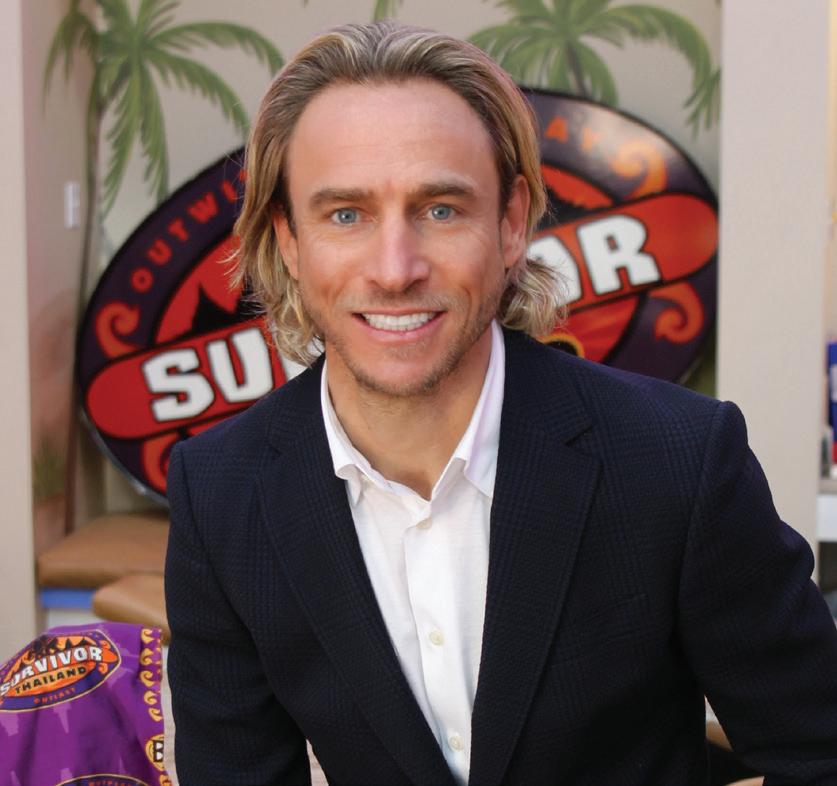
about the expert
DR. JED HILDEBRAND
HILDEBRAND ORTHODONTICS
Dr. Hildebrand has participated in Christian dental missionary work in Mexico, Cambodia, India, and Thailand. With his love of extreme sports, he can often be found snowboarding with his wife, Kim, motorcycling with his son, Kai, or wake surfing with his daughter, Liv. Dr. H is thankful to his hard-working staff and loyal patients for helping him enjoy the job he loves.
ask the EXPERT
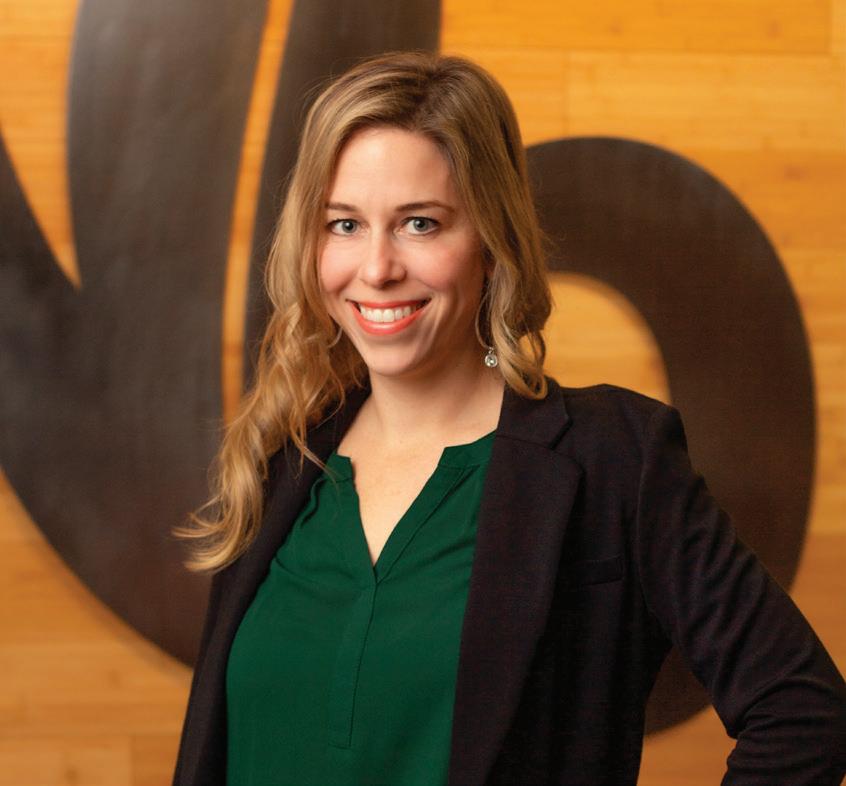
about the expert
MANDY COTTEN, FNP-C
INSTITUTE FOR HORMONAL BALANCE AND BIOTE
Dr. Mandy Cotten, FNP-C has performed over 15,000 pellet procedures, averaging 300 per month. As clinic coordinator at BioTE, she helps train others in the importance of hormone optimization to assist patients in achieving the highest quality of life. She was named a Top Family Nurse Practitioner by the International Nurses Association. She’s on the clinical advisory board of BioTE and is currently involved in research to investigate the long-term benefits of hormones and the BioTE method.
HORMONE REPLACEMENT THERAPY THE WONDERS OF BIOIDENTICAL HORMONE REPLACEMENT
Q&A
WHAT ARE BIOIDENTICAL HORMONES?
Bioidentical hormones look exactly like your naturally occurring hormones. So, when they can enter your body, they go directly to the receptor site, and achieve the desired results. Conversely, synthetic hormones must be metabolized through the liver fi rst where they must convert to a different structure and sometimes can cause the opposite effect than what’s desired. Where conventional hormone therapy is often only available in one or two set doses, bioidentical hormone therapy (BHRT) dosage can be tailored to the individual patient’s needs. BHRT can be administered through creams, patches, pills, or pellets. Patients can contact the Institute for Hormonal Balance at (817) 467-7474 or Donovitz.com to schedule a consultation and determine which is best for them.
WHY DON’T MORE DOCTORS UTILIZE BIOIDENTICAL HORMONES?
Unfortunately, there was a—now discredited—study in 2002 called the Women’s Health Initiative which incorrectly indicated that hormones were dangerous for women. Due to the media’s exacerbation of this study, many providers and patients were scared away from hormone therapy— conventional or bioidentical. The primary investigators in this study have walked back their fi ndings realizing they didn’t actually show bioidentical hormones to be dangerous for women. (However, synthetic progestins did increase risk for breast cancer and cardiovascular issues.) One of the primary investigators, Dr. Robert Langer has since said, “Over-generalizing the results from the women who were on average 12 years past menopause to all post-menopausal women, has led to needless suffering and lost opportunities for many.” Many women have unduly suffered due to the overgeneralization of these fi ndings.
WHAT ARE THE BENEFITS OF BHRT?
Balanced mood, improved sleep, reduced brain fog, decreased hot fl ashes, decreased vaginal dryness, increased stamina and energy, increased muscle mass, decreased fat mass, increased libido, heart protection, bone protection, brain protection, and enhanced sexual response and desire.
HOW SOON CAN I EXPECT RESULTS FROM BHRT?
This depends on the type of hormone therapy you’re using. Typically, you should start to notice a difference within seven to 10 days of starting a new therapy. With pellet therapy, you should notice a larger difference around the four-to-six-week mark. Sometimes adjustments to the treatment plan are needed. I ask new patients to commit to two rounds of pellets since dosage adjustments are sometimes needed to get patients feeling optimal.
HOW OFTEN WILL I NEED TO FOLLOW UP DURING MY THERAPY?
Hormone therapy is not black and white. We obtain initial lab testing, then test again four to six weeks after initiating therapy. The patient shouldn’t require labs again for another year, unless we’re adjusting their dose. Most male patients need pellet therapy every four to six months. Most female patients need pellet therapy every three to fi ve months.
HOW MUCH SHOULD I EXPECT TO PAY?
Pellet therapy for women is $350 every three to fi ve months. For men it ranges between $650 and $750 every four to six months.
DONOVITZ.COM // (817) 467-7474 << GET IN TOUCH
PAIN MANAGEMENT GETTING YOU BACK IN THE GAME OF LIFE
WHAT IS PAIN MANAGEMENT AND WHY IS IT IMPORTANT?
Understanding pain is the first step in managing it. The goal of pain management is to minimize pain, rather than eliminate it. This is because quite often it’s not possible to completely do away with pain. Two other goals of pain management are to improve function and increase the quality of life. These three goals go hand-in-hand. Pain management is important because it allows patients suffering from chronic pain to explore all their treatment options before committing to surgery. At Regency Pain & Therapy Institute, we have committed signifi cant resources to make available most treatment options under one roof. There are many suitable options for patients to choose from, including but not limited to physical therapy, manipulations, medications, procedures, injections, and surgery.
WHAT CAN I EXPECT AT MY FIRST APPOINTMENT?
As a pain management specialist, I begin every new patient appointment with a complete pain evaluation. This includes developing a medical history, reviews of any tests or imaging, and a physical examination to help me better understand your pain. This initial evaluation is one of the most important parts of the pain management process because a full and complete assessment is a key component in developing a customized treatment plan. No matter the cause of pain or how long it has been present, a patient should expect to have a better understanding of their pain and treatment options after our initial visit.
WHAT PAIN CONDITIONS DO YOU TREAT?
Throughout my 14-year career as a pain management physician, I’ve treated most chronic pain conditions, and have successfully helped my patients manage neck and back pain, joint pain, headaches, nerve pain, and pain caused by accidents. If a patient’s condition is something I can’t treat, I’ll work to get them set up with an appropriate specialist.
DOES YOUR PRACTICE ACCEPT MOST INSURANCE PLANS?
Our practice does accept most major insurance plans and often times with many insurances, patients don’t need a referral and can set up a consultation directly though our clinic. We have dedicated staff to help you fi gure out what’s cover by your particular plan.
DO YOU HAVE A PROFESSIONAL MISSION STATEMENT?
My focus is on decreasing a patient’s pain while increasing their productivity, minimizing medication use, maximizing physical activity, and improving quality of life. I believe quality care is fi rst achieved by performing a thorough physical exam and taking a detailed history of the patient to obtain the right diagnosis. Once diagnosed, I provide new patients with detailed information about their diagnosis and spend quality time with them making sure they understand everything. From that point, we work together to move forward with an individualized treatment plan. Often by the time a patient sees me, they’ve been to multiple doctors and may have given up on ever having their quality of life back. I want to partner with them and help them live a full, meaningful life again.
WHAT ARE SOME OF YOUR CONTRIBUTIONS OUTSIDE OF YOUR DAILY CLINICAL PRACTICE?
I strive to give back to the communities I serve and look for opportunities where I can personally impact people and their health. This includes participating in local health fairs, serving on local healthcare boards and committees, and supporting programs within the community as well as local charities.
ask the EXPERT

about the expert
JASON BUTLER, M.D.
REGENCY PAIN & THERAPY INSTITUTE
Dr. Butler is a specialist in interventional pain management and sports medicine. He began his medical training at the George Washington University School of Medicine and Health Sciences and completed his residency and fellowship at John Peter Smith Hospital. Before coming to RPTI, Dr. Butler worked as a team physician for Texas Wesleyan University, Texas Christian University, Hotter ‘N Hell Hundred, and Golden Gloves.
ask the EXPERT
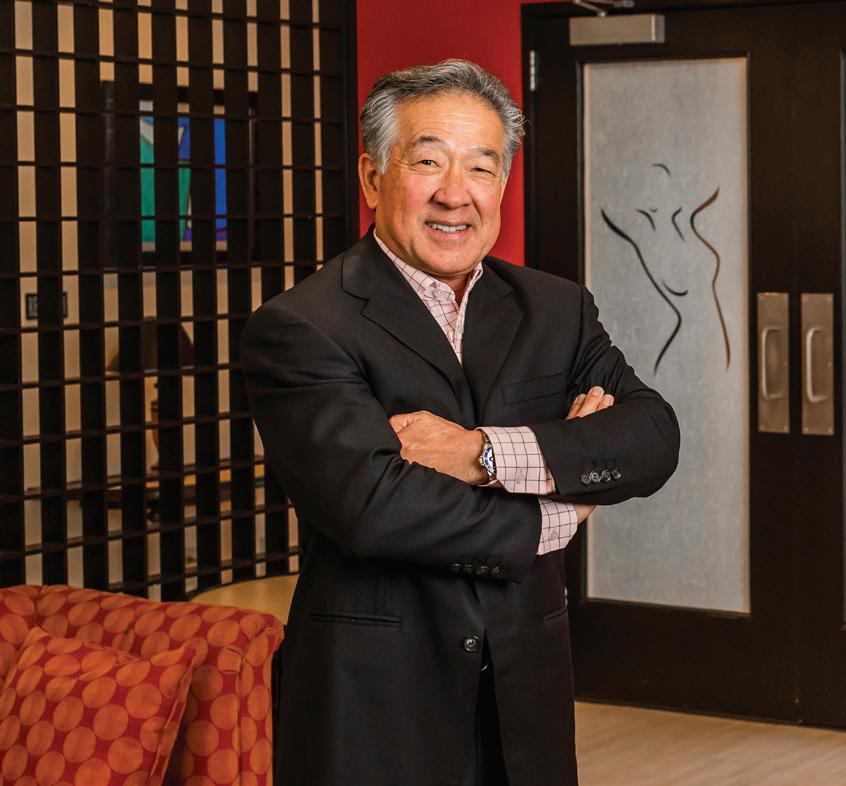
about the expert
Y ANTHONY NAKAMURA, MD, FACS, PA
ACCENT ON YOU PLASTIC SURGERY AND MEDI SPA
Dr. Nakamura completed med school at University of Texas Medical Branch, his internship and residency training at LSU School of Medicine, Charity Hospital New Orleans and residency training in plastic surgery at UTMB Galveston. Dr. Nakamura is a member of the American Medical Association, the American Society Medical Association, the American Society of Plastic Surgeons, the American Society of Aesthetic Plastic Surgeons, and Texas Medical Association and is a Fellow of the American College of Surgeons.
PLASTIC SURGERY DISCOVER YOU ONLY BETTER
WHAT IS PLASTIC SURGERY?
Plastic surgery quite literally means reshaping. It comes from the Greek word, etymology, meaning “the art of remodeling”. Plastic surgery is the surgical specialty involving the restoration, reconstruction, or alteration of the human body. It can be divided into two main categories: reconstructive surgery and cosmetic surgery.
HOW DO I KNOW IF I’M A GOOD CANDIDATE FOR PLASTIC SURGERY?
Each cosmetic surgery patients comes to us with their own unique concerns, personalities, and goals for their appearance. After a consultation visit, we will discuss your concerns and desires and review your health history. We then devise a plan of surgical care that will give you the most natural results for your age and history.
IS PLASTIC SURGERY SAFE?
Choosing to have plastic surgery is an important decision and selecting a plastic surgeon is vital. Look for someone with experience, skill, and training, preferably with board certifi cation from the American Society of Plastic Surgeons. Investigate your surgeon, his reputation, and the facility where the procedure will be performed. We offer a fully certifi ed American Association for Accreditation of Ambulatory Surgery Facilities accredited operating room which assures our patients the level of care they need and the comfort and privacy they deserve.
AM I ABLE TO HAVE MORE THAN ONE PROCEDURE AT A TIME?
Yes, one of our most requested procedures is a Mommy Makeover, which is a combination of breast procedures and tummy tuck. In addition, some women also ask for liposuction to contour their bothersome areas. Multiple procedures are considered based on the surgery time needed.
HOW MUCH RECOVERY TIME/TIME OFF WORK SHOULD I EXPECT?
Of course, each person is different, so each recover is different and dependent on the surgery performed. You’ll be up the day of surgery and will be given oral pain medication for early recovery as well as local blocks administered by an anesthesiologist to decrease discomfort in the fi rst 24 to 72 hours of recovery. Most patients return to work three to ten days after surgery, depending on the surgery and type of work they do.
IN 2021, WHAT HAVE BEEN THE FIVE MOST POPULAR PROCEDURES AT YOUR SURGERY FACILITY?
The plastic surgeries procedure we’re most often asked to perform are breast augmentation, breast lift, tummy tuck, waist tuck and liposuction. As a board-certifi ed plastic surgeon with 30 years’ experience, I’ve performed thousands of these procedures with beautiful results.
ARE THERE THINGS I CAN DO TO AID IN MY RECOVERY?
Fortunately, there’s plenty you can do to facilitate the healing process. If you’re a smoker, quit a minimum of four weeks before surgery, and don’t smoke for at least four weeks afterward. Nicotine slows healing and increases risk for complications. Take it easy but don’t do nothing. Get up and move gently and frequently, as soon as possible after your procedures, to promote good circulation, prevent blood clots, and ease stiffness and discomfort. Go to all follow-up appointments with your surgeon and listen to him, not the internet. Don’t take any herbs, supplements, or medications without your doctor’s permission.
ACCENTONYOU.COM // (817) 417-7200 << GET IN TOUCH
ONCOLOGY PIONEERING THE LATEST IN ONCOLOGY TREATMENT AND CARE
WHAT LED YOU TO THE FIELD OF ONCOLOGY AND TO USMD?
My desire to become an oncologist began while obtaining my Ph.D. in cellular and molecular biology. I researched molecular causes of cancer and gained confi dence that humankind could discover how to treat cancer. From then on, I knew I wanted to lend my talents to fi ghting cancer. I joined USMD in 2020 to lead the organization’s efforts to create and launch its new medical oncology and hematology division. I was excited to join USMD and help the organization build a different type of cancer care program. At USMD, we know every patient’s cancer journey is unique, so we tailor treatment plans to each patient. We partner with and support patients from diagnosis through treatment and survivorship.
THAT SOUNDS ENCOURAGING. CAN YOU TELL US MORE?
Our brand new facilities offer the most advanced care and treatment as well as access to precision medicine and clinical trials. We have a compassionate team that treats patients like family, boardcertifi ed doctors, experienced advanced practice clinicians, and nurses certifi ed by the Oncology Nursing Society. We also offer patients after-hours support, a nurse navigation program, and fi nancial counselors.
HOW IMPORTANT ARE PREVENTIVE SCREENINGS IN REGARD TO EARLY CANCER DETECTION?
Preventive screenings are important to overall health, but they’re also important when it comes to catching cancers early. The goal of screening is to fi nd cancer before it has time to grow and spread, when it can be more easily treated and possibly cured. It’s important to talk with your doctor about which screenings are appropriate for you.
WHAT ADVICE WOULD YOU GIVE TO SOMEONE SELECTING AN ONCOLOGIST?
Look for an oncologist who’s up to date on the latest cancer knowledge, developments, and treatment—and who wants to share that knowledge. You want someone who encourages and is willing to answer questions and address concerns. This includes questions from patients and loved ones. It’s also important your oncologist offer clear and concise explanations of diagnosis, prognosis, treatment, and expected outcomes, including any side effects and benefi ts. Finally, you want an oncologist with access to the latest technologies and treatments, including precision medicine clinical trials.
WHAT EXCITES YOU ABOUT THE FIELD OF ONCOLOGY? ARE THERE NEW DEVELOPMENTS ON THE HORIZON?
Oncology is always evolving, with new treatments and breakthroughs on the horizon. Even now, precision medicine, sometimes called personalized medicine, offers a new approach to cancer treatment. Precision medicine is a type of care that lets doctors select treatments matched to molecular characteristics of a patient’s cancer, allowing oncologists to provide new and personalized treatments. I’m happy to have access to precision medicine at USMD and am confi dent this will lead to more successful treatments with better outcomes.
HOW CAN SOMEONE SCHEDULE AN APPOINTMENT WITH YOU?
I practice at the USMD Arlington Oncology and Infusion Center located at 801 West Interstate 20, Suite 132, Arlington, Texas 76017. You can call (682) 274-8080 to make an appointment with me or one of my partners.
GET IN TOUCH >> USMD.COM // (682) 274-8080
ask the EXPERT
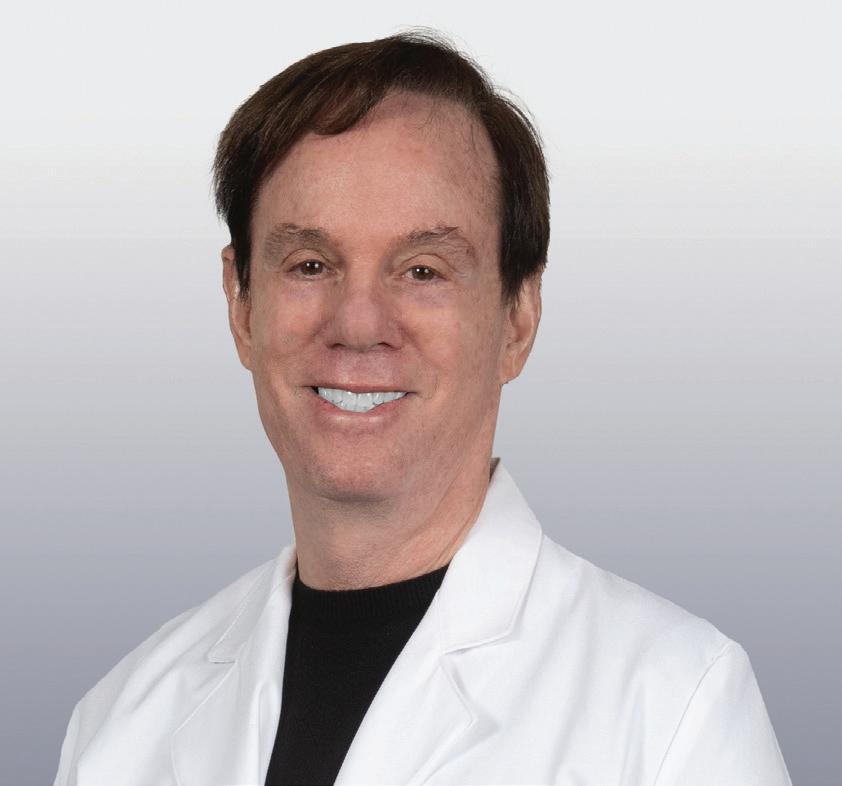
about the expert
GERALD EDELMAN, MD
MEDICAL DIRECTOR OF MEDICAL ONCOLOGY AND HEMATOLOGY AT USMD
Dr. Edelman specializes in medical oncology and hematology and serves as medical director of the division at USMD. He has practiced in North Texas for nearly 25 years and feels blessed to serve this community. His aspiration to practice medicine came from his passion to help people and his desire to lend his talents to fight cancer and blood disorders.
ask the EXPERT
WOUND CARE HELPING HEAL PREVIOUSLY UNTREATABLE WOUNDS
about the expert
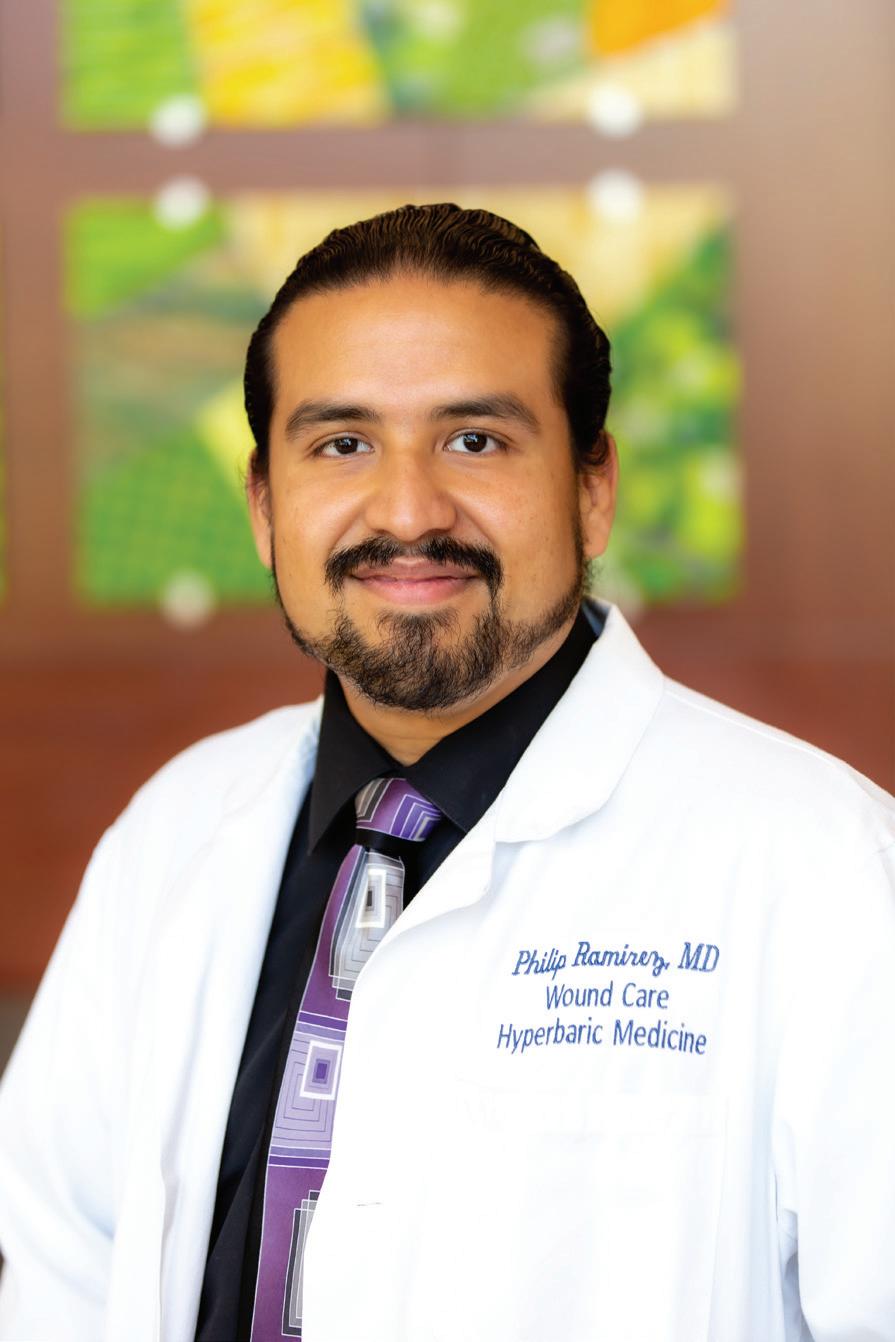
PHILIP RAMIREZ, MD, CWSP
METHODIST MANSFIELD WOUND CARE AND HYPERBARIC CENTER
Dr. Ramirez is dual-board certified in family medicine and wound care with international training in hyperbaric medicine and wound care. He has given lectures and authored research papers on wound care and hyperbaric treatment. Dr. Ramirez is a member of Undersea and Hyperbaric Medical Society, Association for the Advancement of Wound Care, American Medical Association, and Texas Medical Association.
WHAT IS HYPERBARIC OXYGEN THERAPY?
Hyperbaric oxygen therapy (HBOT) provides high doses of oxygen to your bloodstream and ultimately to your wound in an effort to support your body’s own tissue repair activities. HBOT helps the body’s oxygen-dependent, wound-healing mechanisms function more effi ciently. While enclosed in a clear, large chamber, patients breathe pure oxygen, saturating their blood plasma and allowing it to carry from 15 to 20 times the normal amount of oxygen to the body’s tissues.
HOW DOES HYPERBARIC OXYGEN HELP HEAL A WOUND?
Hyperbaric oxygen therapy helps the body’s oxygen-dependent, wound-healing functions work more efficiently while stimulating growth factor production and release, which serves as a stimulus to healing. Another effect of HBOT is vasoconstriction, which reduces posttraumatic edema. In effect, HBOT maintains oxygen delivery while blood fl ow is improved in the microcirculation by the edema-reducing effect of vasoconstriction.
AM I A GOOD CANDIDATE FOR HYPERBARIC OXYGEN THERAPY?
HBOT is a good option for patients suffering from chronic, non-healing wounds. Current scientific studies support the role of HBOT for individuals with wounds that haven’t responded to comprehensive standard wound care. However, HBOT is covered by insurance only for certain conditions. Patients must meet clinical eligibility criteria to be covered by Medicare and other payors. Some common indications for HBOT are acute carbon monoxide intoxication, gas gangrene, acute traumatic peripheral ischemia, crush injuries, progressive necrotizing infections (necrotizing fasciitis), acute peripheral arterial insuffi ciency, preparation and preservation of compromised skin grafts, chronic refractory osteomyelitis that’s not responded to conventional medical and surgical management, osteoradionecrosis as an adjunct to conventional treatment, cyanide poisoning, actinomycosis, and diabetic wounds of the lower extremities.
WHAT SHOULD I EXPECT WHEN VISITING A CENTER FOR WOUND HEALING?
We’ll examine you and gather personal and family medical history, so we can tailor your plan of care. We’ll examine your wound and might remove dead tissue in and around the wound. We’ll teach you to care for your wound at home and schedule further testing if needed.
ARE THERE ANY RISKS WITH THIS TYPE OF THERAPY?
Pressured Oxygen is a drug. As with any drug, there are slight risks. There is a very small risk HBOT may cause some short-term vision changes while receiving treatments. This will return to normal after you have completed your hyperbaric oxygen therapy treatment regimen, so there is no need to adjust your glasses or contacts. In order to maximize oxygen delivery to your wound, the pressure in the chamber is increased which will provide a sensation of fullness in the ears, like riding in an airplane. Your hyperbaric technician will instruct you on the proper way to handle this mild pressure change. Should a complication arise during HBOT treatment, it is important you have an experienced provider there to help adjust your oxygen dosing. With oversight from an experienced provider and close monitoring there should be no residual effects and you should be able to resume hyperbaric oxygen therapy with a slight adjustment to your treatment regimen should a complication arise.
UROLOGY HOLISTIC AND CONSERVATIVE CARE FOR YOUR URINARY HEALTH
AS A UROLOGIST, WHAT ARE SOME OF THE KEY CONDITIONS YOU TREAT?
I specialize in the diagnosis and treatment of urologic and genital conditions in men and women. However, my scope of practice is more focused compared to that of a general urologist. My expertise lies in helping men and women address urinary incontinence, voiding dysfunction, and overactive and neurogenic bladder. Additionally in women, I manage pelvic organ prolapse, female urethral disease, pelvic fl oor disorders, and vaginal fi stulas.
WHEN SHOULD I SEE A UROLOGIST?
If you’re experiencing symptoms related to urinary systems and functions, it’s wise to establish care with a urologist. We care for men and women. Our skill set includes non-surgical and surgical treatments. Common reasons to seek urologic care include urinary tract infections or urinary cancers, kidney and bladder stones, blood in the urine, enlarged prostate, erectile dysfunction, infertility, vasectomy, and more. This is in addition to the conditions my partners and I treat at USMD Center for Advanced Pelvic Medicine and Bladder Health.
WHAT CAN BE EXPECTED DURING MY FIRST APPOINTMENT?
Before your appointment, it’s a good idea to prepare a list of questions or concerns you have. This is the time to address them. We’ll also look at your medical history, including medications, assess the severity of your problems, and set goals for your treatment. In addition, I always perform a thorough physical exam if warranted.
IS SURGERY THE ONLY OPTION FOR TREATING UROLOGY CONDITIONS?
Absolutely not! What historically may have required surgery may be observed or managed in an offi ce setting today. The USMD urology team treats and manages urologic conditions using education and observation, medications, procedures—and surgery, when needed. When surgery is the best option, we perform mainly endoscopic, laparoscopic, or robotic procedures. Treatment will vary depending on your condition and its severity. It’s always best to partner with a qualifi ed urologist to determine the most appropriate treatment plan.
WHAT MADE YOU WANT TO SPECIALIZE IN THE FIELD OF UROLOGY?
I’m passionate about helping patients improve their quality of life. Generally speaking, urologic issues and conditions are thought to be embarrassing and difficult to discuss. My goal is to help patients understand they’re not alone. We have so many treatment options available to help. I’m privileged to be able to help patients overcome and manage these issues.
HOW CAN SOMEONE SCHEDULE AN APPOINTMENT WITH YOU?
I treat patients at USMD Center for Advanced Pelvic Medicine and Bladder Health, located at 811 West Interstate 20, Suite 114, Arlington, Texas 76017. To make an appointment with me or one of my partners call (817) 784-8268 or visit USMD.com.
ask the EXPERT

about the expert
SAMIR DERISAVIFARD, MD
USMD CENTER FOR ADVANCED PELVIC MEDICINE AND BLADDER HEALTH
An Arlington native, Dr. Derisavifard is a fellowshiptrained urologist at USMD Center for Advanced Pelvic Medicine and Bladder Health. He earned his medical degree at UT Southwestern and completed urologic training at Northwell Health and the Cleveland Clinic. He’s a strong believer in evidencebased medicine and his goal is to educate patients to understand their condition and make informed decisions about their care.
GET IN TOUCH >> USMD.COM // (817) 784-8268
ask the EXPERT
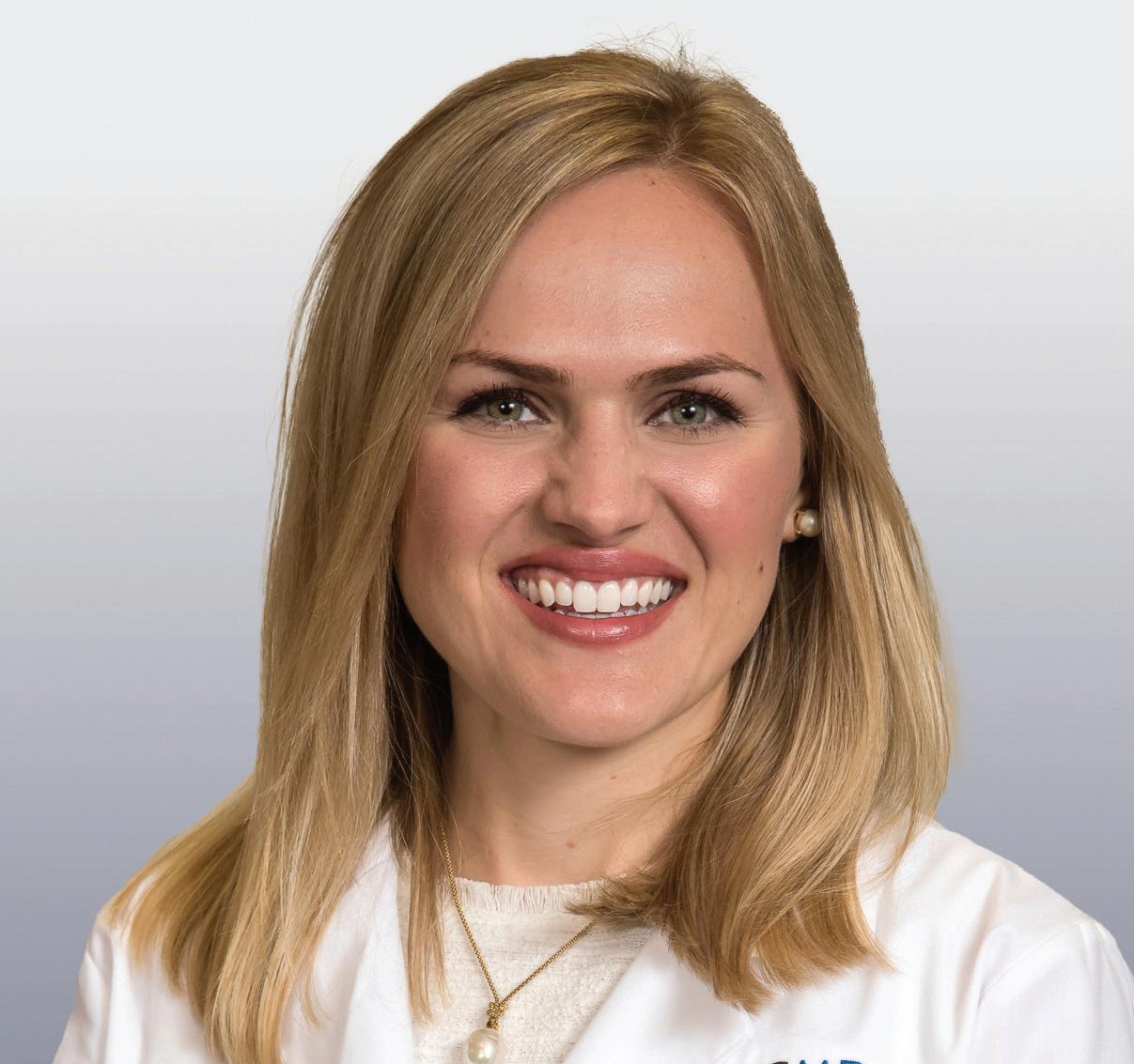
about the expert
ANGALENE JACKSON, DO
USMD MANSFIELD OB/GYN CLINIC
Dr. Jackson specializes in obstetrics and gynecology at USMD. She’s a Fort Worth native who loves the longevity of the patient-physician relationships in women’s health. There are many milestones that occur in a woman’s life and Dr. Jackson feels blessed to be a part of them. She strives to give each patient the time, attention, and care she needs and deserves.
OBGYN WALKING WITH WOMEN THROUGH ALL LIFE’S STAGES
WHAT ARE SOME OF THE KEY HEALTH CHALLENGES FACING WOMEN?
Women’s health issues are as multi-faceted as the lives women lead. Though a woman can present with a physical issue, the problem can have major implications on the complex and varied roles a woman plays, including mother, professional, wife, or daughter. It’s important for women to be aware of how lifestyle, stressors, and mental health impact their physical health and longevity. We know the leading causes of death for women in the U.S. are heart disease and cancer, both of which can be either reduced by staying on top of health and wellness or detected early with screenings when there’s a higher chance of cure. As women, we tend to put everyone else’s needs ahead of our own. But if we neglect our own health, everyone loses.
ARE THERE IMPORTANT PREVENTIVE SCREENINGS WOMEN SHOULD RECEIVE?
We recommend women come in for an annual well-woman visit. These once-ayear checkups serve as preventive visits to review screening tests, assess risk factors for inherited diseases, follow up on chronic conditions, and check for any early signs of disease. Specifi c tests include pap smears beginning at age 21, mammograms around the age of 40, colonoscopies at age 45, and bone density scans at age 65. These are general guidelines. Your doctor may recommend screenings earlier and/or more frequently, if you have certain risk factors. These visits are also a great opportunity to talk with your doctor about birth control, trouble with periods, sexually transmitted infections, depression, and more.
WHAT ARE SOME STEPS WOMEN CAN TAKE TO ACHIEVE BETTER HEALTH?
Generally speaking, to achieve overall better health, women can practice things such as healthy eating, being active, getting regular checks up, avoiding unhealthy behaviors such as tobacco use or excessive alcohol use, being aware of mental health, which includes managing stress and getting enough sleep. Try to take some “me” time when you can fi t it into your schedule.
WHAT CONDITIONS DO YOU TREAT?
As an OB/GYN, I care for women through all stages of life for conditions that involve the female reproductive system. This includes heavy, painful or irregular periods, abnormal pap smears, fertility assessment, pregnancy and postpartum, pelvic pain, fi broids, ovarian cysts, bladder infections, vaginal infections, menopause, breast issues, and depression to name a few.
WHAT’S YOUR FAVORITE PART OF YOUR JOB?
I love the relationships I’m able to form with patients and being able to care for women through the different stages of life. I feel so fortunate that my patients entrust me with such personal and major moments. It’s my honor to partner with women of all ages to help them realize optimum wellness and wellbeing.
HOW CAN WOMEN MAKE AN APPOINTMENT WITH YOU?
I practice at the USMD Mansfi eld OB/GYN Clinic, located at 2800 East Broad Street, Suite 100, Mansfield, Texas 76063. To make an appointment with me call (682) 518-1035 or visit USMD.com.
USMD.COM // (682) 518-1035 << GET IN TOUCH
HEALTH & WELLNESS EMSCULPT TREATMENTS
WHAT IS EMSCULPT?
Emsculpt is a non-invasive body sculpting procedure designed by BTL which uses electromagnetic technology to build muscle and burn fat. Through the high intensity electromagnetic therapy procedure one can enlarge current muscles, as well as grow new muscle fi bers. It is designed for both men and women who want to achieve a more sculpted abdomen, buttocks, arms, calves or thighs.
HOW DOES IT COMPARE WITH OTHER BODY CONTOURING METHODS/ TREATMENTS?
Other body sculpting devices target the destruction of fat, whereas Emsculpt targets the development of muscle. This makes Emsculpt a great non-surgical alternative to the Brazilian butt lift.
HOW DOES IT WORK? WHAT DOES IT DO? IS IT SAFE?
Emsculpt is based on high-intensity focused electromagnetic energy. A single Emsculpt session causes thousands of powerful muscle contractions which are extremely important in improving the tone and strength of your muscles. These powerful induced muscle contractions are not achievable through voluntary contractions; therefore, the muscle tissue is forced to adapt by remodeling its inner structure. This results in muscle building and sculpting your body. The Emsculpt procedure is currently FDA cleared to treat your abdominals, buttocks, arms, calves and thighs.
HOW SOON CAN I SEE RESULTS? HOW MANY TREATMENTS SHOULD I BOOK?
The normal course of treatments is 2 sessions per week for 2-3 weeks depending on the body part to be sculpted. Optimal results are seen 3 months later. As with any body sculpting procedure–surgical or non-surgical–the best results and maintenance of results are achieved with proper diet and exercise routines. We place all of our patients on a clean diet during and after treatments to maximize these results. Many patients would benefi t from a fat debulking procedure prior to muscle contouring. For this reason, our offi ce also offers Vanquish ME which is a non-surgical radiofrequency fat reduction procedure. Vanquish ME procedures are done one session per week over a 4-6 week period of time, but can be repeated as needed. Vanquish ME can be done on the abdomen, back, and thighs for 360-degree treatment.
WHAT IS THE GENERAL COST?
The minimum industry pricing for Emsculpt is $750/ session regardless of body area treated. At Skandii MedSpa, we utilize our Clean Start HCG Diet, Vanquish ME, and Emsculpt as a metamorphosis bundle. This package is designed to help our clients lose weight, reduce residual fat deposits, and sculpt their core in a 6-week period of time (maximum results visible at 3 months). This package represents $6500 worth of treatments for $5000. By comparison, a surgical procedure would not only NOT be able to build muscle tone, but would cost more and require post-operative down time.
DO YOU OFFER FINANCING?
We do offer financing through Care Credit. We accept cash, check, all major credit cards, and health savings account cards. We offer gift cards, which make the perfect gift for a recent graduate, new parent, or a bride or groom to be.
ask the EXPERT
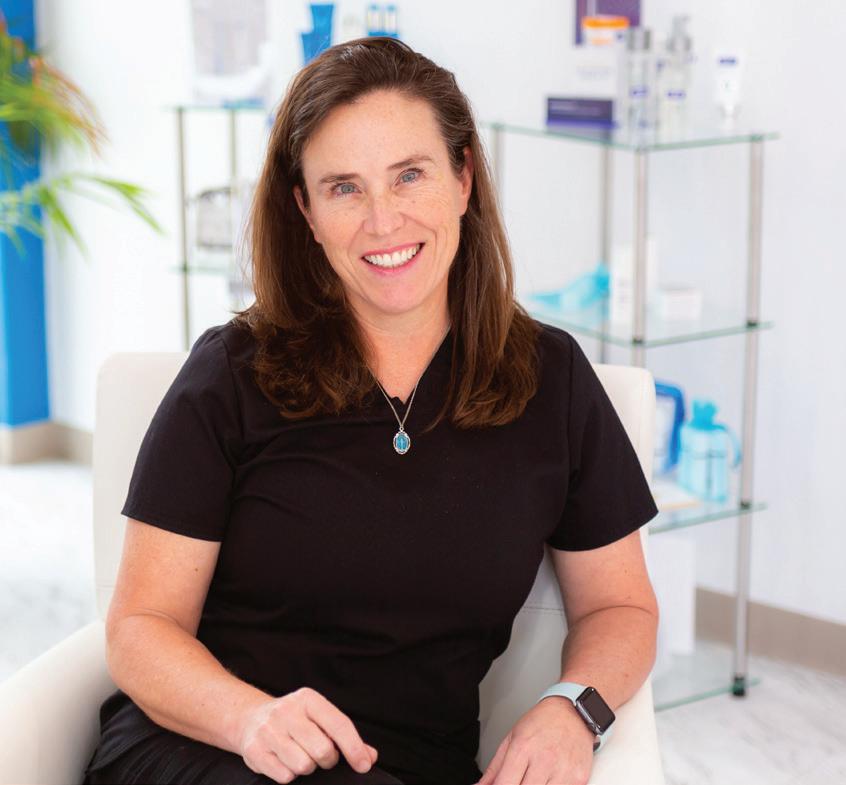
about the expert
ANNA TOKER, MD, FACS, FASCRS
SKANDII MED SPA
Dr. Anna Toker is a native Texan with a penchant for Zydeco, being raised in Louisiana. Her experience as a top colorectal surgeon propelled her to expand patient offerings at Skandii Med Spa. As Medical Director, she offers supervised weight loss, body sculpting, and medical aesthetics. She is an avid tennis player, and supports various charities.







